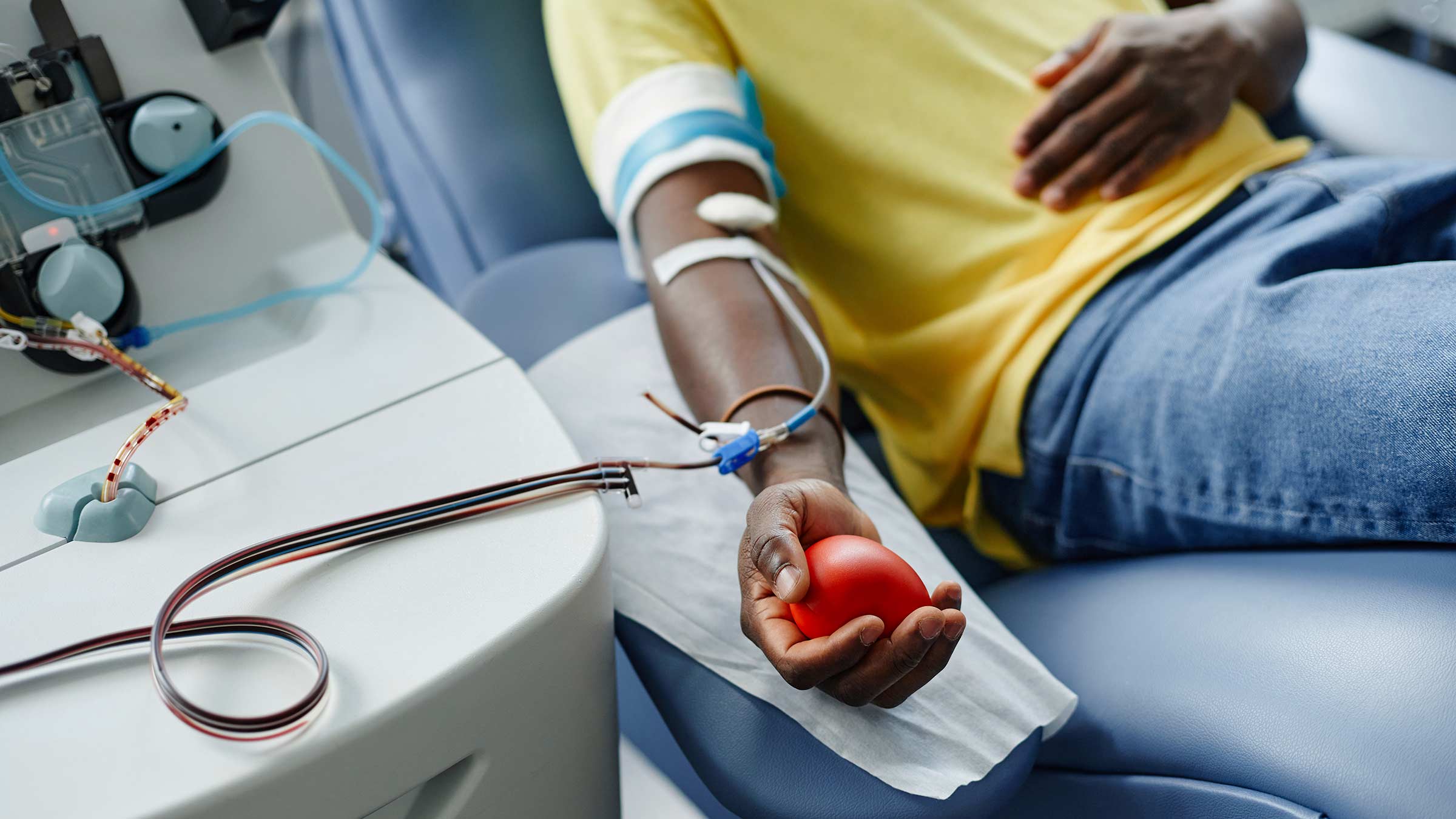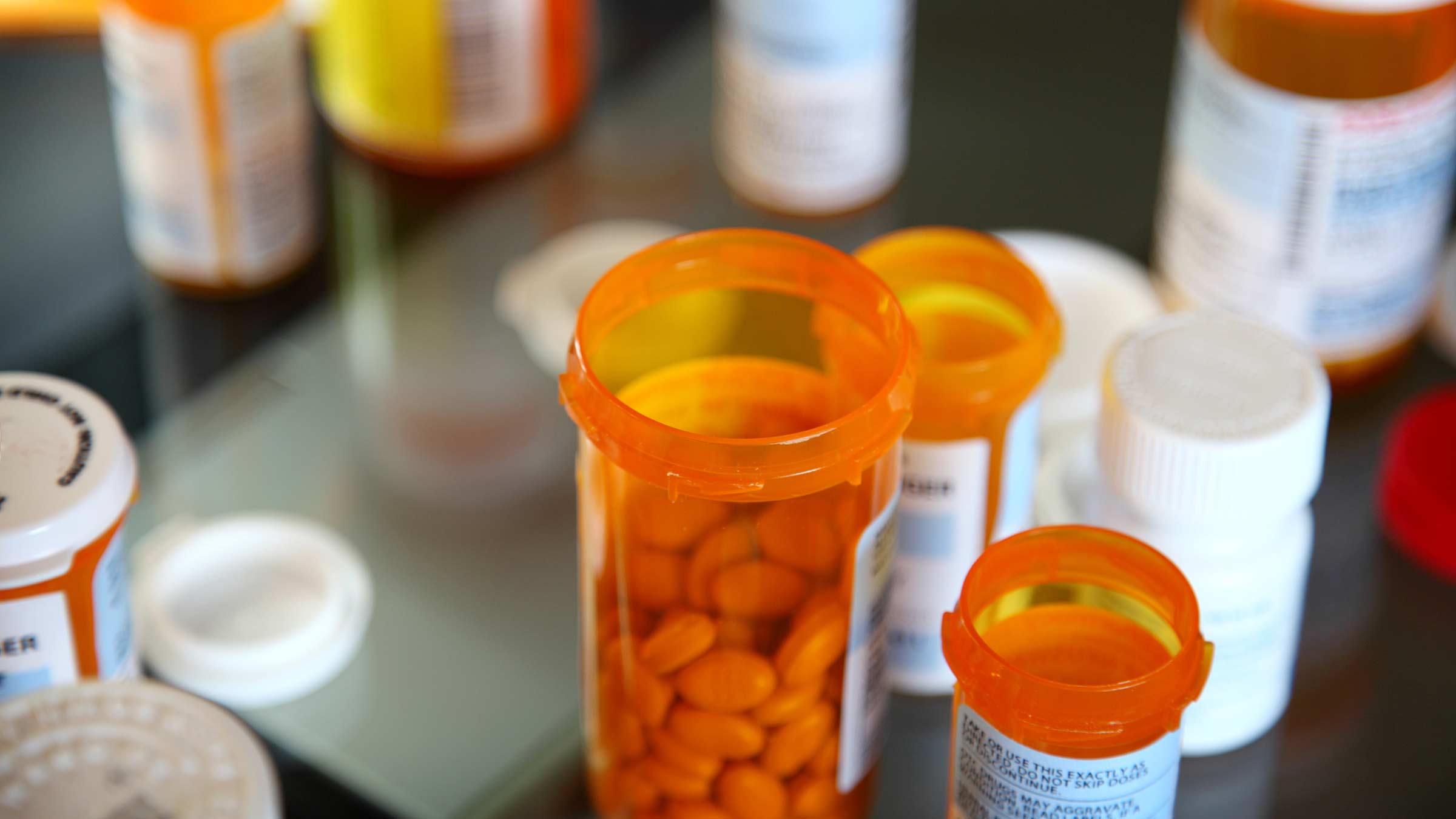
Not everyone is always eligible or physically able to donate blood. But, if you’re among those who can donate, your willingness to help will save lives.
On average, someone in the United States needs blood every two seconds. That blood has to be donated from someone else — we don’t have a synthetic substitute.
“The blood products provided to The Ohio State University Wexner Medical Center from volunteer donors are directly responsible for helping us save lives every day.” Scott Scrape, MD, a pathologist and Transfusion Medicine physician at the Ohio State Wexner Medical Center.
Your decision to donate blood can make a big difference to people in your community. For example, during the COVID-19 pandemic, there was a blood shortage, and many hospitals — including some in central Ohio — faced a critical need to get blood to their patients.
Who needs donated blood?
Donated blood products (whole blood, red blood cells, platelets and plasma) are used for many conditions and procedures, including:
- Cell-based immunotherapy
- Stem-cell transplants
- Bone-marrow transplants
- Organ transplants and other surgeries
- Pregnancy complications, such as ectopic pregnancies or hemorrhage associated with childbirth
- Severe anemia
- Traumatic wounds
- Burns
- Blood disorders such as sickle cell disease, hemophilia and thalassemia
Some of these conditions create short-term emergencies in which someone urgently needs blood. Those with some other conditions, though, require blood products administered at regular intervals for their entire lives.
The Ohio State Wexner Medical Center, a large academic health center that sees about 65,000 patient admissions each year, needs about 5,000 blood products each month, Scrape says.
“That’s about six to seven blood products every hour of every day.”
In the United States, about 29,000 units of red blood cells are needed each day, according to the American Red Cross.
Unfortunately, only about 3% of age-eligible Americans donate each year.
Because patients’ blood types determine which other blood types they can receive through transfusion, some donor blood is especially valuable. Type O negative blood is always in demand because it can be given to patients of all blood types. It’s often in short supply, though, because only 7% of Americans have type O negative blood. Type AB plasma also can be transfused to someone with any blood type, so this is also in demand — but also often in short supply, since just 4% of Americans have type AB blood.
How do I benefit from donating?
One unit of blood — about a pint, the amount that’s collected with one blood donation — can be used to save up to three lives, according to the Red Cross.
Ashley Tainer-Harp, a medical technologist and laboratory safety and compliance officer at Ohio State East Hospital, has been regularly giving blood since 2002. In the past 23 years, she’s managed to donate multiple gallons to the American Red Cross, Versiti and the Armed Forces Blood Bank.
“This is one more way for me to give back. It makes me feel good to help others,” she says. “As a medical technologist who works in the blood bank, too, I know the importance of our donors. Shortages happen way too often.”
Aside from the satisfaction of helping others, there is some research that links regular blood donation to lowered cholesterol and some other health benefits.
What can I expect when donating blood?
The actual blood collection takes about 10 minutes, though the whole donation process typically takes about an hour. That process includes registration; a quick, private medical screening and health history review; blood collection; and relaxing afterward with refreshments.
Tainer-Harp says it’s helpful to eat a good meal and be fully hydrated before giving blood to maintain normal activity levels after. A good night’s rest both before and after donating helps, too.
Giving blood generally isn’t painful. You might feel a pinch or sting when the needle is first inserted, and/or some brief discomfort.
After donating, some people feel nauseated, lightheaded or dizzy for a few minutes. This is why you should take your time relaxing afterward and enjoy some of the free refreshments often provided at donation sites.
You may find, as part of the health screening process, that you’re ineligible because of your medical history, prescription medication you take or because you’ve recently traveled to a country where there are currently high rates of certain diseases.
As part of the screening, a drop of blood is collected from a finger prick to test your blood’s hemoglobin, a protein that helps carry oxygen from the lungs to the rest of the body. You may be ineligible to donate that day if your hemoglobin count is below 13 gm/dl (for men) or 12.5 gm/dl (for women).
Where to donate blood
You can find blood drives near you through the American Red Cross, Versiti Inc. and other local suppliers through a variety of sites that host mobile drives — these include libraries, churches or even your own workplace.
Depending on where you live, there may also be a brick-and-mortar donation center nearby where you can donate anytime during its regular hours. Versiti, which supplies blood for the Ohio State Wexner Medical Center, is located in Columbus at 3830 Fishinger Blvd.
The bottom line
Donating blood is safe. Blood drives such as those held by the Red Cross or Versiti use sterile kits that are used once, then discarded. You can’t contract any diseases from donating blood. Donating blood is a way to help others without having to give money or a considerable amount of time.






